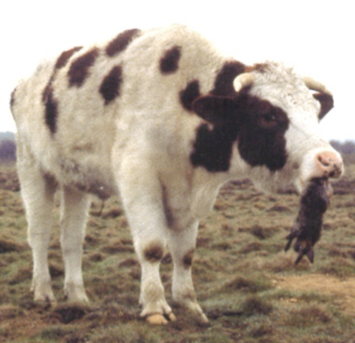
I have spent a lot of time building fence for goats. I have also spent a lot of time looking for goats that escaped, herding goats back into fences, repairing the fences they destroyed, sawing through cattle panels so they could get their heads out of the fence, and answering the doorbell to find neighbors standing with my goats in the front yard. There are two reasons for all of this. First, when I started trying to fence goats in, I knew very little about fencing or goats and so I had to learn by trial and error. The second reason is that goats don’t believe that fences are meant for them. To a goat, fences are just a minor inconvenience as they go about their lives doing whatever they want to do.
That said, there are some things you can do to slow them down and potentially keep them where you’d like them to be. In this short video, Brian Freking of Oklahoma State University extension talks about the different kinds of fence you can choose from, and gives some hints and tips on how to make them work.
Here’s the link for tablet readers.
If you’re as optimistic as I am, and therefore tend to believe that everything is going to go as smoothly in real life as it does in your imagination, you want to watch this second video of a goat enjoying both sides of his fenced yard.
Tablet readers, here’s your link.
While the bad news is that this goat is doing what goats do to fences, the narrator is giving some good pointers. Goats won’t leave their buddies, unless, that is, most of their buddies are already outside the fence. I once used an electric fence to “contain” 30 goats. One of them, named Sid Vicious for his punk rock hairdo, had long hair that protected him from the fence charge. His herd mates used this to their advantage by pushing him against the fence until he knocked it over. Then they jumped out and went for a walk. Sid was too relaxed to bother, so he stayed behind with a couple of his friends.
Of course, you can make progress over time. Since I was building firebreaks with my goat herd as part of a research project, it was critical that they stay inside the fence for the majority of the time. Here’s what I learned that might work for you too.
1. Make sure that the goat has everything inside the fence that he thinks he needs.
Note: There is a difference between what YOU think he needs and what the GOAT thinks he needs. If he’s got plenty of forage, and water, that’s a good start. But after awhile, goats get bored. So if there is something outside the fence that looks interesting then he’ll take a leap. Pay attention to what they’re looking at and the differences between what’s inside and what’s outside. Move them when you notice them looking longingly at the fence perimeter.
2. Charge that fence!
Brian had it right in his video when he said a goat needs a higher charge to be deterred than other animals. I typically kept my fences at about 7,000 volts.
3. Train to the fence.
Brian mentions that an electric fence is a “mental” barrier. If a goat believes that the fence hurts, he won’t touch it. So before you ever put a goat in an electric fence, set it up in their regular pen and let them test it out. Be sure that it is working well before they touch it. If it doesn’t hit them hard the very first time, they won’t have absolute faith in it and one day they’ll test it and that will be the day it’s not working quite right and they’ll go merrily on their way.
4. Treat the electric fence the same way you want your goat to treat it.
If you step back and forth over the fence, goats can learn that maybe they can get over it safely too. At least that’s what some of my goats learned from me when I did that. You see, goats don’t think they’re any different than people, and if you can do something, they can do it too. That afternoon, the goats were out, having learned that they could jump over the fence.
5. If you’ve got a jumper, get rid of him.
Just like cattle producers should get rid of ill-tempered cattle, you should get rid of goats that are good at figuring their way out of fences. They will get out, teach others how to get out, and they’ll make your life painful. This is probably the most important thing you can do to save your sanity.
I’ll share more about my experiences with goats down the road. In the meantime, here’s where you can learn more about my project using goats to manage vegetation.
P.S. Yes, Bill Fosher, I still do like goats. 🙂





I used the polynet fence and tried for 10,000 volts especially at first. If it arcs into their nose then they will only test it two to three times in the first 15 minutes before learning that it hurts too much. Goats do an amazing job of brush management and we learned that we could rejuvenate oak savannah in the Midwest by moving the goats weekly before they got down the preference list to oaks. Oak is near the bottom of the list here.
Comments are closed.